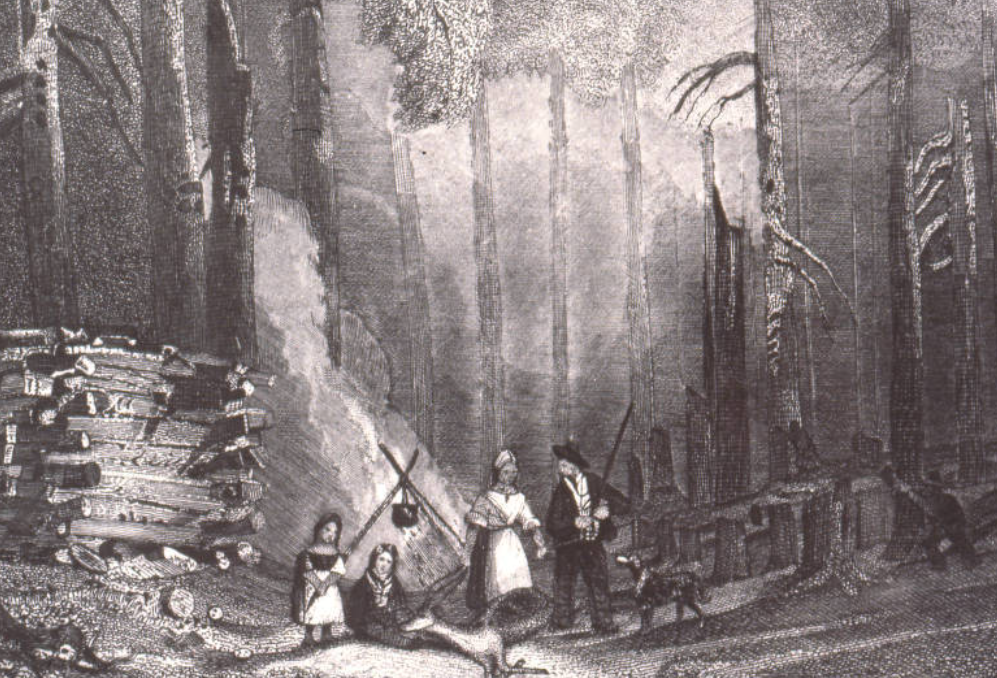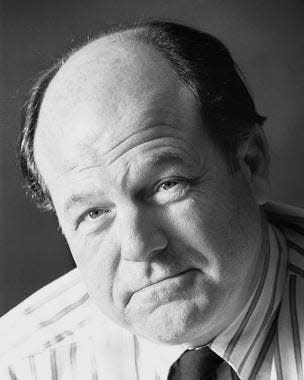'She was without fear': Sallie Merion represents the mothers who helped settle Columbus

With the approach of Mother’s Day, it might be interesting to look back at the life of a young mother when Columbus was at the edge of the frontier and the new people in town were quite busy indeed.
Columbus was founded as a created capital for the State of Ohio in 1812. Two years prior, William Merion arrived and built a cabin for himself and his family at what is now the corner of Moler and South High streets, but was then a trail through the forest.
Many years later, a descendant of William Merion named Emily Merion Stewart wrote a lengthy family history. In that work, she described in some detail what life was like for William’s wife, Sallie Merion. It is a tale worth retelling.

“Everyone who worked on a farm at that time expected to be boarded and lodged. The school teacher boarded around. There were no cooking stoves, sewing, knitting or washing machines, and even the plain washboard was not used here until about 1830. It is evident that managing the housekeeping department of this family was no small matter. Every garment worn by the family was made from the raw material. The flax had to be spun, woven, bleached and made into garments. The table linen, toweling, bedding and even ticking and sewing thread were handmade.
“The wool of a hundred sheep was brought in at shearing time. Mrs. Merion had it washed, picked, carded [ in early times by hand card], spun, dyed, woven, and made into flannel, jeans, linsey, blankets, coverlets and stocking yarn. Then it had to be made into clothing … The floors were covered with beautiful carpets, not rag, but all wool, in the brightest colors of her own dyeing. The milk of 15 to 20 cows was brought in twice a day, to be turned into butter and cheese…
“It is impossible to do justice to the cooking of those days. Turkeys, geese, ducks, chickens, spare ribs, beef roast, whole pigs, etc., were hung by twine cords which were fastened to hooks in the mantle, and roasted before the wood fire. Chickens, quail, squirrels and tenderloin were first dipped in melted butter and broiled on the gridiron over wood coals.
“The corn pone that was baked in the Dutch oven all night, and was hot for breakfast, was matched by johnnycakes baked on a board before the fire, and chicken pies with not less than three and sometimes five fat chickens in one pie. The boiled dinner consisted of ham or shoulder, a bag holding not less than three quarts being filled with meat, vegetables and pudding batter which were all boiled together. The pudding sauce was sweet, thick cream and sugar or maple syrup.
“The brick oven, which held four pans of bread and twelve pies, was heated every day in summer and twice a week in winter. Fruit in its season was pared and dried in the sun. Canning was unknown. Tomatoes, of which a few plants were placed in the flower beds, were purely ornamental, and were called Jerusalem apples. Soda, then known as pearl ash, was not to be had. Mrs. Merion made it by leaching hickory ashes, boiling the lye into potash, and putting it in an earthen vessel, and baking it in the brick oven, until it dried and whitened. With this and buttermilk she made delicious biscuits, batter cakes and cornbread.
“Her table linen was of the whitest, her china always polished, and her table butter always stamped, in early times with four hearts, later with hanging pears…
“She raised her family without nerves. They never heard of nervousness while under her care. She was without fear. Returning from Franklinton in 1814, alone on horseback, she was overtaken by darkness while crossing the river at the old ford, near the present lower bridge of the Hocking Valley Railway. A gang of wolves took after her and chased her nearly to her own door. When asked whether of not she was frightened, she said, ‘I am a good rider, and was on a horse which nothing could overtake. What had I to be afraid of?’
A later historian in the 1890s summed up the importance of women like Sallie Merion in the story of Columbus. “With such mothers as she to give birth to the architects of our civilization, it is not strange that Ohio has won her distinction in the family of States. But we owe to such mothers something more than distinction, for it was by their efforts and sacrifices, no less than those of their husbands and brothers, that the rude forces of nature were subdued, and the wilderness converted into smiling hills, valleys and plains, spread with blossoms and waving harvests.”
It was a different time, with new people with new ideas in a new land.
William and Sallie Merion are buried in Green Lawn Cemetery in Columbus.
Ed Lentz, a local author and historian, writes this weekly 'As It Were' column for The Dispatch.
This article originally appeared on The Columbus Dispatch: Sallie Merion 'was without fear,' like other women who settled Columbus

